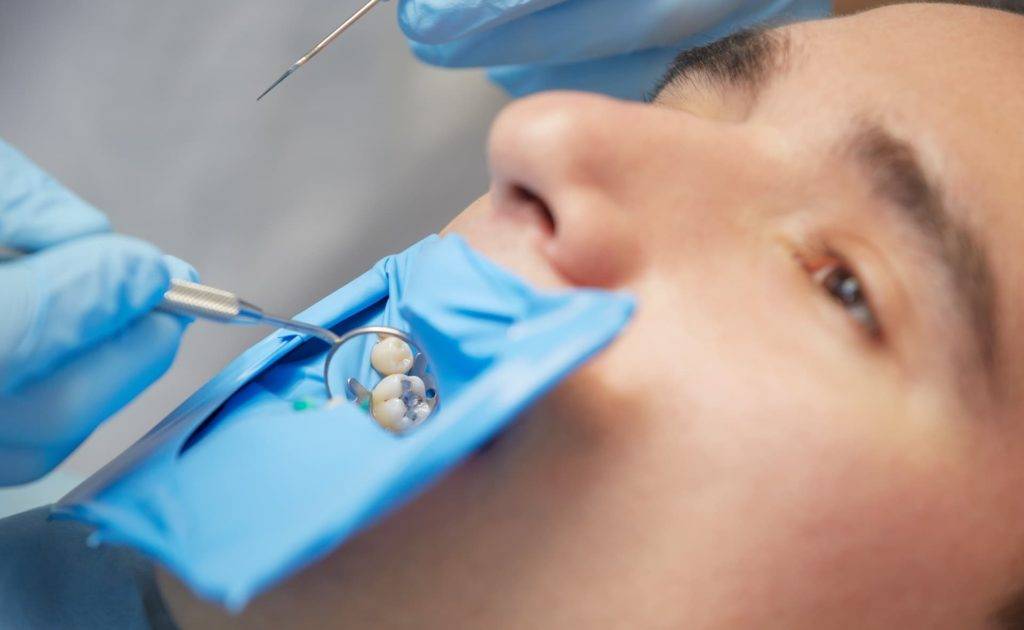What’s a root canal treatment?
Root Canal Treatment is performed by a dentist to remove the pulp or soft matter in the tooth. This is made of nerves which are required for the tooth to grow.
Under normal circumstances, root canals are performed under LA or Local Anesthesia.
This is a very normal and every day procedure for a dentist. But are there any risks involved? Is it very painful? Lets understand these questions in detail.
Why and when would a dentist recommend a root canal for you?
Sometimes the pulp or soft matter inside your tooth gets infected due to a very deep cavity or due to trauma or injury.
In such cases, the pulp may be infected but the structure of the tooth or the crown is intact and still useful. Hence, the best solution is to remove the pulp clean the chamber in the crown where the pulp or nerves reside and retain the crown. This is when a root canal treatment is performed to remove the pulp and clean the chamber.
There could be multiple reasons due to which the pulp may bet infected or die. Some of them are:
- Cavity of Decay of the teeth reached the pulp.
- Too many treatments performed on the same tooth over time.
- Trauma or injury to the tooth (eg. A cricket ball hitting the tooth, a fall on the stairs face down and getting a hit on the tooth)
- A crevice or crack formed on the tooth due to any other reason.
The dentist can recognize the need for a root canal only after a radiograph or intraoral x-ray. There are special dentists who have expertise in doing root canals. They are called endodontists, since the science of root canals is called endodontics. A dentist may recognize the need to check for a root canal is you are sensitive to a tap on the tooth or if you have swelling around the tooth with a cavity or if the tooth is discolored.
How does a dentist do a Root Canal Treatment?
A root canal treatment is considered bread and butter dentistry amongst dental circles because it is the most common dental treatment. The treatment needs you to be injected with Local Anesthesia and hence you need to visit a dental clinic.
Step 1: Injecting the LA

Step 2: Removing the pulp
Once the anesthetic has been injected, the area around the tooth becomes numb. You will not feel any sensation around that area for some time now. This is when the dentist starts to drill. The dentist will cut over the top of the crown to get access to the chamber in the tooth which contains the pulp or the nerve matter. After which, the dentist will remove the infected or damaged pulp with tools call dental files. This is followed by a cleaning of the chamber using a special solution to disinfect the chamber and prevent reinfections.
Step 3: Cleaning & Filling of the Canals
After the pulp or nerves have been removed and the chamber has been thoroughly cleaned, the dentist will fill that area with a rubbery material called gutta-percha. Gutta-percha is a soft rubbery material which is organic in nature and biocompatible so the body accepts it without any reactions. You must understand that you will be prescribed antibiotics both before and after the root canal treatment to avoid infections.
Step 4: Temporary Capping
The dentist has cut open the top of the crown to gain access to the pulp chamber. Hence, it now needs to be covered and filled. However, a permanent filling or covering can only be done after the dentist is sure of the infection being eliminated and hence he/she will do the same in the following visits. The dentist will however, fill the top of the crown with a temporary filling.
Follow-up after your root canal
So, now that the root canal treatment has been completed, you will be allowed to go home and be appointed for follow-up visit in a day or so. You may feel the numbness due to the anesthesia for a few hours after which the effect of the anesthesia normally wears off. You will be prescribed antibiotics and painkillers for the next few days.
You will be in perfect shape the next day to resume your daily chores, work and routine. But you must try not to chew or bite on the tooth where the root canal has been done to avoid any damage to the weakened tooth structure. Remember the filling is still temporary.
You’ll see your regular dentist within a few days of the root canal. They’ll take X-rays to make sure that any infection is gone. They’ll also replace the temporary filling with a permanent filling.
After a few days, the dentist will remove the temporary filling and replace it with a permanent composite filling. The dentist may in most cases also put a crown or cap on the tooth to strengthen the weakened tooth structure due to the root canal treatment.
Is a root canal risky?
There are some basic risks in any dental or medical treatment. The same applied to a root canal treatment also. One of the most common risks is that of damaging the tooth structure during the root canal treatment which is when the root canal is deemed to have failed. In such a case, the tooth needs to be extracted and replaced with a bridge or a dental implant.
Since the processes involved cleaning the pulp chamber or canals in the tooth which are very narrow, there are chances of residual infection remaining even after cleaning. In such cases there is a risk of an abscess or development of a post operative infection. This generally happens because of residual infection or inefficacy of antibiotics.
But these risks are not very serious. A root canal is the best way to save a natural tooth. While there are also people who choose to extract the infected tooth instead of getting a root canal done purely out of fear of root canals, it is not a wise thing to do.
What’s next after the root canal?
A root canal just saved your tooth. Now enjoy your life and continue to reap the benefits and positive results of the most common procedure in a dental clinic. You must be very careful in the future and try to keep your oral hygiene in the best shape to ensure that you do not need another root canal ever again.
Brush your teeth twice a day. Floss after every meal. Gargle regularly and keep your mouth hydrated and you will be absolutely fine.










